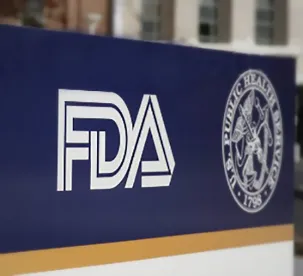Back in the early days of the COVID-19 pandemic, we published a post outlining the different kinds of diagnostic tests that were being marketed and the different roles of the two main federal regulators that oversee the quality of different subsets of tests. Since then, there have been some important policy developments affecting diagnostic and antibody testing. There also has been significant growth in the number of tests authorized by the Food and Drug Administration (FDA) for point-of-care, or POC, uses in various patient settings such as clinics, emergency departments, and physician offices. However, we said in April that “to date the FDA has not authorized any test kits to diagnose COVID-19 that can be used fully at home (that is, for both collection and processing)” – which continues to be true today. Recent policy changes, as well as newer tests authorized by FDA for emergency use, have further clarified (and raised the practical import of) the distinctions between: (a) diagnostic kits that are used to conduct the actual molecular testing on instruments in various settings, whether in laboratories or in POC settings, and (b) collection kits that are used to collect a patient’s specimen for subsequent submission to a laboratory.
Prioritization of At-Home and OTC Testing Solutions
Although several at-home specimen collection kits have been FDA-authorized in response to the ongoing public health emergency, those specimens must still be sent to clinical laboratories for testing. In other words, the agency has not yet granted permission to any complete “at-home testing solution” for COVID-19, where both specimen collection and reading of the results of a test for the SARS-CoV-2 virus can be done by an individual without any involvement by licensed medical professionals. Additionally, all tests remain prescription-use only, meaning they must be ordered by a health care provider. In late July 2020, the agency released recommendations for developers of diagnostic tests that can be performed entirely at home or in other settings besides a lab, such as offices or schools, and that could be made available without a prescription. The document includes FDA’s expectations for validating these kinds of non-prescription, or over-the-counter (OTC), tests and their recommended sensitivity, specificity, and other performance characteristics. The agency noted in its announcement of the document’s availability that “[w]hile the recommended sensitivity for these non-lab tests is lower than lab-based tests, the tremendous benefits of broader access to simple and fast testing options generally outweighs this risk.”
Beyond the overarching public health goal of having wide-scale access to OTC testing for all Americans, regardless of whether they suspect they have been exposed to COVID-19, FDA leadership continues to articulate the agency’s high-priority goal to support innovative solutions that would increase testing accessibility or significantly increase the nation’s testing capacity (e.g., by reducing reliance on reagents and other supplies). As of the agency’s daily count on October 30, 2020, 287 tests were authorized by FDA under Emergency Use Authorizations (EUAs) – including 223 molecular tests, 57 antibody tests, and 7 antigen tests. Of the molecular tests, 7 are authorized for POC uses. The agency has also recognized 3 home specimen collection kits and 3 saliva collection devices for use with molecular testing solutions. Of the 7 authorized antigen tests, 6 of them can be used in patient care settings, while only 1 of the antibody tests authorized to date can be used at the POC.
Summary of FDA-Related Testing Milestones Since May 2020
Besides releasing a daily count of authorized tests and specimen collection kits, FDA has issued numerous press releases announcing significant advancements in the testing technologies available, as those specific devices have been authorized and also as the agency has taken its own steps to provide technical support to diagnostic test developers. Since May 2020, those FDA announcements have included:
- The first molecular diagnostic test using at-home collection of saliva specimens (May 8, 2020), which was developed for use in conjunction with a specific clinical laboratory-developed test (LDT).
- The first rapid-detection antigen test, also authorized for use at POC settings (May 9, 2020). This milestone was announced with a lengthy explanation of the difference between molecular (i.e., PCR) testing and antigen-based testing, which stated in part: “One of the main advantages of an antigen test is the speed of the test, which can provide results in minutes. However, antigen tests may not detect all active infections, as they do not work the same way as a PCR test...With this in mind, negative results from an antigen test may need to be confirmed with a PCR test prior to making treatment decisions or to prevent the possible spread of the virus due to a false negative.” (Ironically, on November 3, 2020, FDA issued a safety alert for clinical laboratory staff and health care providers regarding the potential for false positive results with antigen tests and noted that it was continually monitoring these devices’ performance in the field, especially in POC settings like nursing homes.)
- The first “stand-alone” at-home sample collection kit, authorized to be used with certain authorized tests (May 16, 2020).
- FDA’s release of a SARS-CoV-2 reference panel, intended to provide test developers with well-characterized reagents to compare the performance of different molecular diagnostic tests under the same conditions (May 27, 2020). Reference panels are used as an additional step to ensure the quality of the tests, validation of new assays, test calibration, and monitoring of assay performance.
- The first COVID-19 molecular test utilizing next-generation sequencing technology, which allows the lab to also generate information about the genomic sequence of the virus present in a sample for research purposes (June 10, 2020).
- The first test authorized for use on people who do not have COVID-19 symptoms or who have no reason to suspect COVID-19 infection (July 24, 2020).
- The first test using a new method of processing saliva samples, called “SalivaDirect” (August 15, 2020). FDA highlighted in its announcement that the new process “does not require any special type of swab or collection device; a saliva sample can be collected in any sterile container. This test is also unique because it does not require a separate nucleic acid extraction step. This is significant because the extraction kits used for this step in other tests have been prone to shortages in the past. Being able to perform a test without these kits enhances the capacity for increased testing, while reducing the strain on available resources. Additionally, the SalivaDirect methodology has been validated and authorized for use with different combinations of commonly used reagents and instruments, meaning the test could be used broadly in most high-complexity labs.”
- The first antigen test that allows users to read the results directly from a testing card at the POC, which is more efficient for healthcare providers and patients because the test does not require the use of an analyzer (August 26, 2020).
- The first POC serological test, which uses a fingerprick blood sample to determine if a patient has antibodies to the virus. It can now be done in patient care settings instead of the provider having to send the blood sample to a lab while both provider and patient wait for the result (September 23, 2020). Although serology, or antibody, tests still should not be used to diagnose an active infection because they only detect antibodies the immune system develops in response to the virus and not the virus itself, FDA’s announcement of this recent EUA included the following comments from Commissioner Dr. Stephen Hahn:
“Authorizing point-of-care serology tests will enable more timely and convenient results for individuals who want to understand if they have previously been infected with the virus that causes COVID-19. Until today, serology test samples were generally only able to be evaluated in a central lab, which can be time consuming and use additional resources to transport samples and run the test. As more and more point-of-care serology tests are authorized, they will help conserve those resources and may help reduce processing time for other types of COVID-19 tests, as less time is spent on serology tests.”
Responding to HHS' Decision to Change the Rules of the Game
In the midst of this rapid innovation and new test deployment and uptake over the past several months, the Department of Health and Human Services (HHS) announced a significant new policy concerning LDTs on August 19, 2020. As we explained in our prior post, FDA regulates the manufacturing of test kits by diagnostics manufacturers under its medical device authorities. However, FDA generally had exercised regulatory discretion to allow labs to use their own LDTs pursuant to rules established under the Clinical Laboratory Improvement Amendments (CLIA), which is administered and enforced by the Centers for Medicare and Medicaid Services (CMS). Both FDA and CMS are agencies that fall within the governance of HHS. At the start of the pandemic, labs developing their own LDTs to provide COVID-19 testing and diagnosis were encouraged to seek EUAs for those tests from FDA.
The recent policy announced by HHS stated that FDA had not engaged in notice-and-comment rulemaking to develop any of its LDT guidelines or marketing requirements, and HHS therefore rescinded all informal policy documents issued by FDA related to this topic. In response, FDA updated its public-facing information for test developers to clarify explicitly that it “is declining to review EUA requests for LDTs at this time.” The agency has also reiterated that it “continues to prioritize review of EUA requests for POC tests, home collection tests, at-home tests, tests that reduce reliance on test supplies, and high-throughput, widely distributed tests.”
Even the HHS policy rescission announcement recognizes that FDA retains authority to regulate LDTs that might be marketed to consumers directly, without an order or prescription from a licensed physician. An FAQ document posted by HHS in conjunction with the announcement states: “Direct-to-consumer (DTC) tests are not LDTs. Any DTC test, including tests shipped by commercial labs, are still required to go through premarket review at FDA, as they are clearly medical devices under applicable statutes.” This may make more intuitive sense if one knows that the legal definition of an in vitro diagnostic, found at 21 C.F.R. § 809.3, includes devices "intended for use in the collection and/or preparation of specimens taken from the human body." Accordingly, any clinical labs operating in compliance with CLIA and offering validated SARS-CoV-2 molecular, antigen, or antibody tests to health care providers should carefully consider what specimen collection devices they are using in conjunction with those LDTs to ensure that they are not violating FDA’s requirements for those in vitro diagnostics or any other applicable state or federal laws. For example, a lab that sends a self-collection device to a patient following a physician’s order for a COVID-19 test could be inadvertently misbranding that device if it is distributed with instructions for use that were written and intended for clinicians, rather than instructions that can be understood and followed by laypersons.
We will continue to monitor FDA and other governmental and private business efforts to improve the national COVID-19 testing infrastructure and report on any notable developments or changes. In the meantime, stay safe and be healthy!




 />i
/>i

